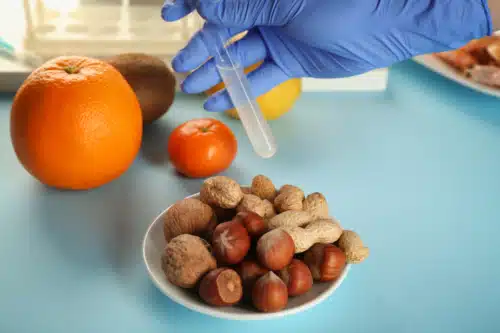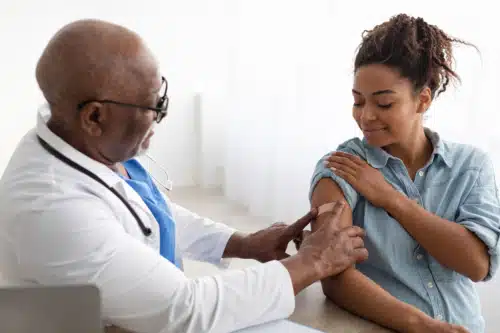
Blood Testing for Allergies
Blood tests can tell if someone has allergies by finding antibodies in the blood that react to allergens.
learn more
There are some common foods that trigger the majority of food allergies. Common food allergy triggers include:
Some who think they have a food allergy may instead have what is known as a food intolerance.
While these two conditions share many symptoms, it is important to understand that a food allergy triggers an immune response and can, therefore, be fatal in some cases. A food intolerance causes digestive issues and discomfort, typically, and are less serious. This is the main and most important difference between food allergy and food intolerance.
When one has a food intolerance, you may be able to consume small amounts of the food and only experience symptoms when you consume large amounts.
Food intolerance can be caused by several different triggers, including:
Some patients may have an aversion to certain foods due to stress or psychological factors, as well.

In some cases, food allergies can result in symptoms that are much more severe, even fatal. Patients who develop any of the following symptoms should seek medical help immediately:
These can be signs of anaphylaxis and require immediate medical treatment.

Blood Testing for Allergies
Blood tests can tell if someone has allergies by finding antibodies in the blood that react to allergens.
learn more
Skin Allergy Testing
This is less invasive than blood tests and is a good alternative for patients who don’t like needles.
learn more
Food Allergy Testing
A challenge test is a highly accurate diagnostic test to determine if a patient has outgrown a food allergy.
learn more
Immunotherapy
Immunotherapy is an ideal choice for patients with severe allergies or those unable to avoid exposure to an allergen.
learn moreThere is no known cure for food allergies; however, there are steps patients can take to manage their condition. In some cases, treatment options may be available to help lower the risk of a reaction. Talk with your allergist today about the right plan for your condition.
Prevention & Avoidance
Avoiding any and all exposure to the food allergy trigger. Patients should always review ingredients in foods and ask questions about the preparation and storage of foods in restaurants.
Mild Reactions
Those with milder reactions can use antihistamines to relieve some symptoms associated with food allergies. Any food allergy intervention should be pursued in consultation with a medical professional.
Severe Reactions
Any patient who has a severe food allergy should create and maintain an anaphylaxis action plan in partnership with their doctor. This includes carrying and knowing how to use an EpiPen.
Risk factors can vary from patient to patient and allergy to allergy. Below is a general rule of thumb for increased risk of having a food allergy or developing another one:
Family history of food allergies
Existing food allergy
Existing environmental allergy
Diagnosing a food allergy involves understanding your medical history, conducting a complete physical examination, and performing several diagnostic tests. Treatment options vary based on a variety of factors. Patients should work with their allergist to determine the best treatment plan for their unique condition.